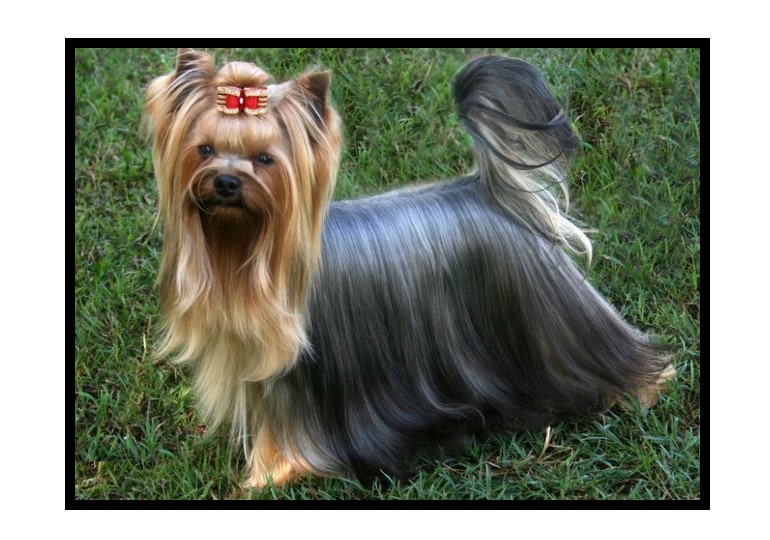
GROUP 1 - TOYS
In the mid 1700s, coinciding with the Industrial Revolution and the changes and demise of agriculture, people came from far and wide seeking work in the areas that provided opportunities. In Scotland, country folk had developed the Waterside Terrier, to keep homes safe from rats and other vermin.
It’s keen hunting instincts also provided their relatively poor table with small game. These little terriers also provided entertainment and the chance for reward in the rat pit, where the dog killing the most rats in the shortest time was declared the winner and his owner duly rewarded.
The Waterside Terrier was described as having 10-12 centimetres of bluish grey hair on the side of the body with a white or silver head. Here lie the genes for the silky coat, small size, blue and tan colouring and hunting and ratting instinct of the Yorkshire Terrier.
Further breeding with the early Skye Terrier and Clydesdale Terrier, who had a bright steel blue colour on its body and clear bright golden tan on the head, legs and feet, helped establish the current, colour pattern of today’s ‘Yorkie.’ In 1865 a litter was born providing a male, “Huddersfield Ben,” who was the foundation sire of the modern Yorkshire Terrier.
The Yorkshire Terrier was first recognised by the UK Kennel Club in 1886 and the UK Yorkshire Terrier Club founded in 1898. The breed standard was also drawn up, which remained unaltered until 1987.
The Yorkshire Terrier is a well balanced, small, sound, square-appearing, elegant, toy “terrier”. As an adult it has a long, silky coat of dark steel blue and clear golden tans, which is parted on the face and from the base of the skull to the end of the tail, hanging evenly and quite straight down the sides of the body. The body should be neat, compact and well proportioned with a straight level topline. The dog’s high head carriage and confident manner should give the appearance of vigour and self importance.
The ‘Yorkie’ is full of spirit, yet calm unless roused or threatened.
The Yorkshire Terrier presents as a small and healthy terrier. There are no known hereditary health issues within the breed, however, as with a lot of small dogs, special attention needs to be focused on teeth and gum disease, patella luxation and hypoglycaemia in small dogs.
The Yorkshire Terrier is an ideal house dog with its lively and intelligent temperament. The ‘Yorkie’ does not moult and is hypo allergenic, making it ideal for families that may have allergies. A Yorkshire Terrier in coat will require daily brushing with the alternative of keeping in short clip, requiring a bath once a week.
The Yorkshire Terrier is just as comfortable on the couch as it is going on a long walk, it makes no difference, as long as they are with you.
Words: Wayne and Alanna Burton with acknowledgement to Jan Clarke and ANKC-BSE
Image submitted by Yel Morag
Now you know a little about the Yorkshire Terrier, you may think that this is the dog for you. Before you make a decision, please make contact with the breed club or your State controlling body for purebred dogs. They will be able to give you information about available puppies and also suggest dog shows where you can see the breed and speak to breeders. In this way you will gain a better perspective of the Yorkshire Terrier and its needs, and whether this breed would suit your lifestyle.


